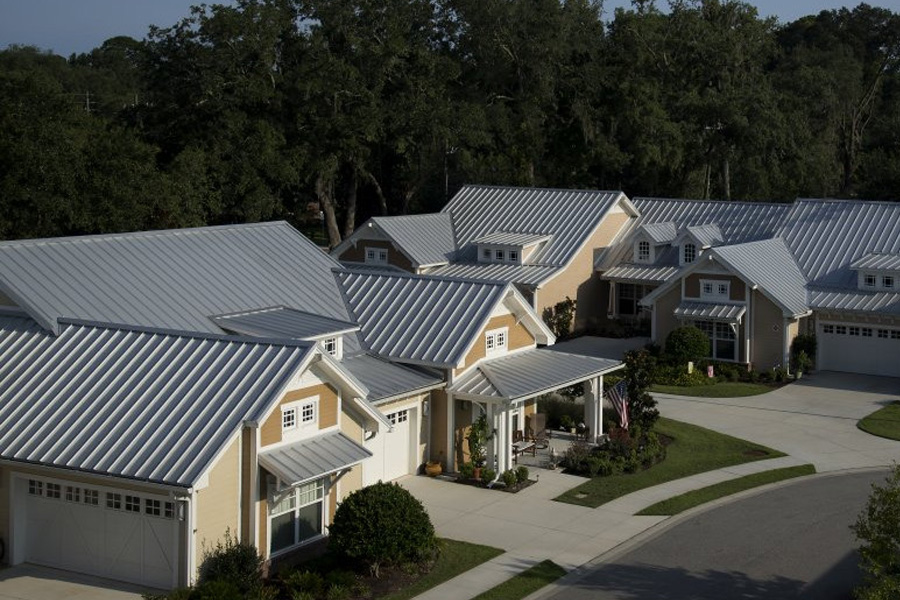Comparing Vinyl and Metal Soffit Panels: Which is Right for Your Home?

Image Source: northshoresheetmetals.com
When it comes to selecting soffit panels for your home, choosing the right material is crucial for both performance and aesthetics. Two of the most popular options are vinyl and metal soffit panels. Each material has its own unique set of characteristics, benefits, and drawbacks. In this article, we will compare vinyl soffit panels with metal soffit panels to help you make an informed decision.
Material Composition and Durability
Vinyl Soffit Panels
Vinyl soffit panels are made from polyvinyl chloride (PVC), a type of plastic known for its durability and resistance to moisture. These panels are lightweight, making them easy to handle and install. Vinyl is inherently resistant to rot, rust, and corrosion, which makes it an excellent choice for areas with high humidity or frequent rainfall.
Metal Soffit Panels
Metal soffit panels are typically made from aluminum or galvanized steel. These materials are known for their exceptional strength and longevity. Metal soffit panels are highly resistant to physical damage, such as dents and impacts, and they do not warp or crack over time. Additionally, metal soffit panels are coated to prevent rust and corrosion, making them suitable for various climates, including those with harsh weather conditions.
Maintenance Requirements
Vinyl Soffit Panels
One of the main advantages of vinyl soffit panels is their low maintenance requirements. They do not need to be painted or stained, and cleaning them is as simple as using a hose to wash away dirt and debris. Vinyl panels are also resistant to mold and mildew, reducing the need for frequent cleaning.
Metal Soffit Panels
Metal soffit panels are also low maintenance but may require slightly more attention than vinyl. They need to be inspected periodically for signs of rust or damage to the protective coating. However, the high durability of metal means that maintenance tasks are infrequent and generally straightforward. Cleaning metal soffit panels involves hosing them down and occasionally using a mild detergent to remove stubborn dirt.
Aesthetic Appeal
Vinyl Soffit Panels
Vinyl soffit panels come in a wide range of colors and textures, including options that mimic the appearance of wood. This variety allows homeowners to choose panels that complement the style of their home. However, vinyl colors can fade over time due to prolonged exposure to sunlight, which may require replacement or restoration to maintain their appearance.
Metal Soffit Panels
Metal soffit panels offer a sleek and modern look that can enhance the aesthetic appeal of contemporary homes. They are available in various finishes and colors, including options that replicate the look of wood or other materials. Metal panels are less prone to color fading, ensuring a long-lasting, attractive appearance.
Cost Considerations
Vinyl Soffit Panels
Vinyl soffit panels are generally more affordable than metal options. The lower material cost, combined with ease of installation, makes vinyl an attractive choice for budget-conscious homeowners. However, the potential need for more frequent replacement or maintenance due to fading or damage should be factored into the long-term cost.
Metal Soffit Panels
Metal soffit panels tend to have a higher upfront cost compared to vinyl. However, their durability and low maintenance requirements can lead to cost savings over time. The longevity of metal panels often means that they do not need to be replaced as frequently, providing better value in the long run.
Environmental Impact
Vinyl Soffit Panels
The production of vinyl soffit panels involves the use of non-renewable resources and chemicals, which can have environmental impacts. Additionally, vinyl is not biodegradable, and disposal at the end of its life cycle can contribute to landfill waste.
Metal Soffit Panels
Metal soffit panels are often considered more environmentally friendly. Aluminum, for instance, is highly recyclable, and using recycled metal in production can reduce the environmental footprint. Metal panels also have a longer lifespan, which means fewer replacements and less waste over time.
Conclusion
Choosing between vinyl and metal soffit panels depends on various factors, including budget, maintenance preferences, aesthetic desires, and environmental considerations. Metal soffit panels offer superior durability, a modern look, and better long-term value, making them an excellent choice for homeowners seeking a robust and low-maintenance solution. On the other hand, vinyl soffit panels provide an affordable and versatile option with a wide range of styles and colors, suitable for those looking for a cost-effective and easy-to-install solution.
By understanding the differences between these materials, you can make a more informed decision that best meets the needs and goals of your home improvement project.




